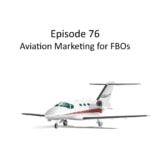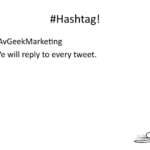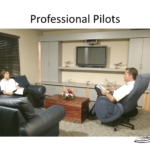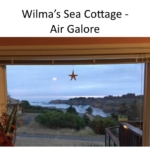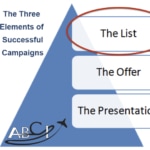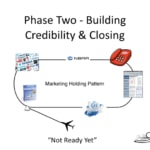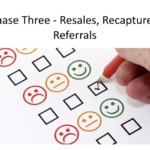 FBO Marketing – More Planes & More People!
FBO Marketing – More Planes & More People!
When you’re in charge of marketing and sales for an FBO, your job is to get more people in the building and more planes in your parking spaces, preferably queued up for gas, ground transportation and other services.
How do you do that?
Well, there are always some things you can control and some things you can’t.
Transcript – FBO Marketing – More Planes & More People!
[MUSIC]Announcer: You’re listening to aviation marketing Hangar Flying, the community for the best sales and marketing professionals in the aviation industry. You can’t learn to fly just from a book. You learn from other pilots who know the tools, the skills, and the territory. Your hosts, John and Paula Williams, are your sales and marketing test pilots.
They take the risks for you and share strategies, relevant examples, hacks, and how-to’s. Be sure to subscribe on iTunes so you won’t miss a thing.
Paula Williams: Welcome to aviation marketing Hanger Plane Episode number 76 — FBO Marketing!
Paula Williams: I’m Paula Williams.
John Williams: I’m John Williams.
Paula Williams: And we are ABCI, and ABCI’s mission is.
John Williams: To help you guys out there sell more aviation products and services.
Paula Williams: Right, and our mission today is to help FBO’s sell more of their products and services. So hopefully by the end of this episode, you’ll have some great ideas for getting more people in the door, and getting them to part with more of their money before they leave, right?
John Williams: Absolutely.
Paula Williams: Absolutely, okay. So if you have any questions about today’s episode, or any other episode, or anything else for that matter, having to do with aviation marketing, you can use the hashtag #avgeekmarketing and that way we will find your comments and other things and reply to every Tweet.
Download our free FBO Marketing Checklist!
Of course you’re welcome also to reply or submit comments, or anything else on social media or our blog, right?
John Williams: Yes.
Paula Williams: All right.
John Williams: Of course.
Paula Williams: [COUGH] Okay, so the big ideas today, we’re going to break this down the way we always do. And that is talk about things in three phases, because it’s always easier to take things step by step than it is to look at the big picture.
Of course the big picture is basically for FBOs to get more business. But we’re going to break that down into three phases. Phase one, Advertising & Prospecting. Phase two, Building Credibility & Closing Sales. And phase three, Resales, Recaptures & Referrals. And the money is always made in the aviation industry.
John Williams: In phase three.
Paula Williams: In phase three. Exactly, it’s a very trust-oriented and very, I’m going to say, habit-driven or routine-driven industry. So once you get people coming in the door, they tend to be really loyal. Which is a wonderful thing. So, carrying on.
John Williams: [LAUGH]
Paula Williams: [LAUGH] Something wrong?
John Williams: Nope.
Paula Williams: Okay. We have strange things going on in the office here, but we’ll [COUGH] carry on, okay. So phase one, Advertising & Prospecting. Of course, this is where most marketing companies spend most of their time. And want you to spend most of your money. But for aviation companies and FBOs in particular, I think our general advice holds true here.
And that is not to spend more than 50% of your marketing budget on advertising and prospecting. Would you agree?
John Williams: Yep.
Paula Williams: Okay, and then you’ll want to split the other 50% between phase two and phase three. So, of course phase one is getting people to be aware of you for the first time.
But for FBOs, we’ve got a really limited pool of people that we need to advertise to, which is a good thing and a bad thing, right?
John Williams: Yes this is the way it is in FBO marketin, in aviation.
Paula Williams: [LAUGH] Right, so you can spend less money doing your advertising and prospecting, but really want to make sure that once people know about you, that you really impress their socks off.
And also that you keep them coming back and get them to bring their friends, and neighbors, and colleagues, and everybody else. So that’s the kind of the general theory, and now let’s get into the details of what we mean by all that and how you do it, right?
John Williams: So let’s gor for it.
Paula Williams: [LAUGH] Okay, so phase one, you want to think about your customer avatars. And we talked about this in a lot of our book club discussions. Just about everybody who writes a marketing book these days uses the term, customer profile, or customer avatar, or something of that sort, where you want to really nail down who your customer is and what their problems are.
And for an FBO, you’ve got a bunch of different customer avatars, depending on the type of FBO and the area that you’re in, and other kinds of things. But the first one is kind of the typical one, or the simplest one, is Owner Operators. People who own their own airplanes and fly wherever they are going, for business or pleasure, and need to park.
They need gas, they need rental cars, they need other services, and possibly lav service, catering, any of the other things that you might provide. Second would be Charter Pilots. Those would be folks that work some of the big charter organizations or small charter organizations. These are folks that fly professionally a lot.
They are not necessarily the passengers, so they’re not necessarily making all of the decisions. But they usually have some influence over, they may not decide which airport to fly into, but they may decide which FBO to visit once that decision’s made about the destination, right?
John Williams: Yes.
Paula Williams: Okay, another one is corporate fleet pilots.
A lot of these folks have relationships with fuel companies. So the decision may already be partly made for them, in terms of where they’re going to land and who they’re going to get fuel from, anyway. But there is some room for influence there. And of course, even if you can’t influence the individual pilots, you can always go after the corporate fleet and see if you can influence their decision.
John Williams: Of course, in particular if you’ve got FBOs across the nation.
Paula Williams: Right, exactly. So this might be a business to consumer sale. Where you’re influencing the decision of the individual pilot, or this might be a situation where you would need to go to the corporate fleet and make your case that your FBO can provide better service than what they’re doing now.
So that might be a slightly different variable there, but for the purpose of today’s discussion, we’re assuming that you’re influencing the end user. [LAUGH]
John Williams: Or users.
Paula Williams: Users, the people in the cockpits right? Okay, all right, so let’s talk first about owner operators, what do we know about them?
John Williams: Well that’s an interesting question, because owner operators could be guys flying 550’s. Although there are very few of them that own it and operate it all at the same time, although I can think of a handful. So, you must be talking, therefore, for owner operators, the guys that are flying the high end recips, and turboprops, and things like that that fly themselves around for business or pleasure.
Paula Williams: Right, or even the dentist that flies the Bonanza, would be one end of that spectrum. And the rock star that has their own pilots, and their whole flight crew would be another one, another end to that spectrum, right?
John Williams: Well no, because, I suppose maybe.
Paula Williams: They are owning their airplane and they are staffing it themselves.
John Williams: Yeah, and they’re operating it, I guess under a very loosely.
Paula Williams: Yeah, depending on how you define that. But in any case, these are people who have the money to have an airplane. So, and obviously they’re probably one percenters. And there are a lot of misperceptions and misunderstandings about high net worth and ultra high net worth people.
And your FBO staff, a lot of times the folks that work with you, the line guys and everybody else, the people at the desk, and so on, there’s a pretty big income disparity between the folks who are working for you, and the folks that they are providing service for.
And sometimes that can create. Some awkwardness so what we’d like you to consider is having them do some things we suggested in the last couple of books. Read the Rob Report, subscribe to Laurie White’s Luxury Blog, some other kinds of things like that. So that they understand, these are just people.
You’ll have the occasional Paris Hilton or celebrity or whatever you want to call them but the vast majority or high net worth and ultra high net worth people are not necessarily celebrities, they’re not necessarily anything that you would think of and they’re certainly not the stereotype of what people would assume.
John Williams: No, they’re not.
Paula Williams: The ones that we’ve seen are very, very nice people. People’s grandma or grandpa, cousin, uncle, they’re just folks.
John Williams: Right.
Paula Williams: One thing that you may find that people that are in this profession, there may be in politics, they may be in other professions, they may be in retail or wholesale or manufacturing, other kinds of industries.
They may be in farming or agriculture, or oil and gas. Not so much lately but [LAUGH] those are a lot of the industries and those are not necessarily the diamond crusted kind of culture that you’re expecting. And a lot of folks are families, there are a lot of families who travel private especially lately since the Airlines have gotten so restrictive and are causing such hassles.
A lot of families are finding with a little bit of vacation they have they want to spend it where they’re going and enjoy their vacation and not spend it in the airport.
John Williams: Kinda go when and where they want.
Paula Williams: Exactly, so let’s talk about professional pilots. What do they want?
John Williams: Actually it depends but nice to sell these but a good price on fuel, good price on landing fees, or trade off their owe.
Paula Williams: Exactly, thing number one is they have to keep their passengers happy and keep their company happy. And this includes the charter guys and the corporate fleet guys, they have to stay within the guidelines of what they’re given.
They don’t want to get in trouble [LAUGH] so they want to make sure that the paperwork is done right and all the bits and pieces, the boxes are checked and things like that. Above and beyond that, I think they’re looking for a crew car, a way to get to their hotel fast because they’re tired.
Making sure that their customers are well taken care of, so that they have a good experience, and so on.
John Williams: Airplanes taken care of, so they don’t get any hangar rash.
Paula Williams: Absolutely.
John Williams: And refueled on demand.
Paula Williams: And to their specifications. So there’s no misfueling. Or anything else that’s going to make people sweat and do a lot more paperwork.
So one really great example of this, Wilma’s Sea Cottage. Air Galore has a company that has a fabulous FBO in Mendocino, California. Nice little airport, very beautiful setting, so a lot of people that fly in there privately, will go off and do their Napa Valley tours and tourism things and stuff like that.
But the pilots get to stay in Wilma’s Sea Cottage. A lot of times there will be a way to arrange that and Mary Fairbanks is really great. Because she is a professional pilot, and a CFI and a lot of other things that she really understands pilots and what they’re looking for and turns this into a really great experience for the pilots as well as the passengers so I think that is a really nice touch.
John Williams: Yeah, it is.
Paula Williams: Not everybody has the opportunity to do that but certainly there’s lodging and restaurants and other things in your area that can make it real easy for your pilots and that’s a wonderful thing, right?
John Williams: Yes, it is.
Paula Williams: Cool, so let’s talk about the list.
How do you find a great list for an FBO? Prospective customers of the types that we talked about? The first one is you need to capture data, so you want to introduce yourself to new passengers and pilots as they come and go and make sure that there’s a way for them to, for you to interact with them and they’re not just transient traffic.
John Williams: They shouldn’t have much problem giving you the information because they’re buying fuel and probably paying a rent fee and who knows what else while you’re there.
Paula Williams: Exactly, so there’s probably lots of ways for you to glam onto that information.
John Williams: [LAUGH]
Paula Williams: [LAUGH] The important thing is you don’t just let that go.
You want to make sure that you capture everything you can about who they were, what they were flying, who their passengers were, what they wanted, what was important to them, and so on. Another thing that you could do is have a contest, drop a business card at the desk to enter.
Maybe a night at a resort something like that, or dinner, other kinds of things that these guys would love and then another thing that you can do is connect on social media. So connect with pilots, travel coordinators, CFOs for companies that have flight departments. You can use LinkedIn to look for other people at that company that you may be connected to and build your network toward the decision makers.
So in a case where maybe the pilots don’t have a lot of control over their decisions, as far as where to get fuel and so on, you can. Move up the tree. Look for the CFOs and the travel coordinators. And other kinds of people that may have more influence over those kinds of things.
This was actually a really good idea that was suggested by Acc-U-Kwik on their blog. And that is kind of the I-Spy method. You look out the window with your binoculars.
John Williams: [LAUGH]
Paula Williams: And you see who’s landing at your airport, and you get the tail numbers. And when you have a few minutes, you can look them up in something like the AviationFiles iPhone app, and see who it is and who the plane is registered to, and put them on your prospecting list, as well.
That’s fair game, that’s public information, right?
John Williams: Yes, it is.
Paula Williams: Okay, the more modern way of doing that, is to use things like TRAQPak or Passur, which are applications that show you who is landing at which airports, and so on, those do require a subscription. So there’s the low tech way of doing it using a free app.
Or the higher tech way of doing it using something a little more-
John Williams: Sophisticated.
Paula Williams: Sophisticated and easier to use that doesn’t require the effort. So up to you. Things that you want to consistently offer. So in marketing textbooks we talk about list, offer, and presentation. So you want to consistently offer as low of cost of fuel as you can as far as being competitive with your neighbors and you know who that is and you know what your parameters are.
If you can have low or no landing fees that’s what people are looking for. Once again, control what you can and the things that you can’t control you’re going to have to find ways to make up for. Coffee and cookies, that’s usually within your control. [LAUGH] Do people really go for that, I mean would that actually influence a decision?
John Williams: Maybe not all that by itself, but As a package of everything you’re talking about, yes.
Paula Williams: It certainly would right. Nice crew cars, they’re looking for something that doesn’t smell bad. [LAUGH] Just having talked with some of the pilots and looking at some of the things that happen in some of the group discussions, and things like that.
They like having nice cars that are quickly available and are not awful.
John Williams: They don’t have to be high-end. It can be a Jeep, but as long as it’s nice and reliable.
Paula Williams: Exactly, maybe an area guide has reviews of local restaurants or hotels and other kinds of things that people are going to want.
If you are catering to the pilots, especially you may want to include places where they can get catering. Here’s where the local liquor store is. Here’s where the grocery stores are. Those kinds of things, because a lot of times they end up doing a lot of the gophering. [LAUGH]
John Williams: Yeah, for the 135 and 91, I’m sure.
Paula Williams: Yep, nice pilot lounge. These are kind of in order of importance. So obviously, the low cost fuel is going to be a big draw. The nice pilot lounge is further down on the list, but that’s still important and last thing nasty surprises.
We could almost put that at the top of the list, couldn’t we?
John Williams: Times have changed. I can remember flying 135 operation before we landed in the pasture and dropped people off, and picked them up again in Texas.
Paula Williams: [LAUGH]
John Williams: I’m serious.
Paula Williams: So the FBO was basically a-
John Williams: There was no FBO.
Paula Williams: A nice patch of grass.
John Williams: We the two pilots, me being one of them. We’d go to the nearest tree and we’d sit there and wait two hours under the shade tree for these guys to get back while we had a thermos of ice cold water or whatever.
I’m serious I’ve done that a couple of times years ago.
Paula Williams: Wow, so things have definitely changed. These pilots are looking for crew cars and lounges.
John Williams: Well, they were high net worth. Ranchers, Texas and they want to go out there and they have somebody to be there either before we get there as we pull-up as we land to pick them up in a brand new truck of some kind and they go off and come back in two, three hours and we take them back.
Paula Williams: Well, it is interesting. Because a lot of folks, we talk to with the FBOs are very concerned that maybe they’re facilities are rustic. Yours were much more rustic.
John Williams: About rustic until you done that.
Paula Williams: And honestly, I think rustic is not bad. If you’ve got great service and you’ve got a way for them to get out of there, they’re not going to care if the FBO itself is kind of rustic.
As long they’re getting good fuel, they’re getting the service that they need and they have a way to get their hotel. They’re not going to use your showers. They’re going to go to the hotel.
John Williams: Of course.
Paula Williams: And take a nap and a shower, and everything else. And so pilot lounge, that’s why we put it close to the end of the list as opposed to the top.
So, let’s talk about how you can help people find you. So we talked about the list the offer, this is the presentation.
John Williams: Yes, it is.
Paula Williams: Okay, so if we’re outbound marketing, there are things that you can do like connecting on social media. You take your top ten list of companies you want to do business with and look them up and connect with them, plug their stuff.
If you one charter company that we know has an author that is a frequent passenger and they plug his books on their social media, I think it’s great. Other kinds of things that you can do to help them promote their businesses in your local area, just be a good Chamber of Commerce member and a good networker and all of those kinds of things.
You can do post cards. We went into some pretty big detail on that in episode 68. Talking about how to do great post cards to that list that you just created. So, all of those tail numbers that you wrote down and all of those details that you put together.
You may not have an email address and you may not want to send them an email just to, because they’re not all that effective and you may end up getting into some trouble with the canned spam act, but you will never get in trouble sending a postcard. So, that’s often a really great first contact for outbound marketing as a postcard.
Another thing you can do if people are really qualified to your top ten list or people that you think you really want to do business with would be direct mail packages and those could include your area guide, and other fabulous things. Maybe some snacks or something like that to make it three-dimensional mail as we talked about in our direct mail episode and things like that to get their attention, and state your case.
Talk about why you’re the best options and how you offer those really cool things that were on the list that they’re looking for. Cool. Other ways to help them find you inbound marketing, things like Ac-U-Kwik and AirNav. You want to make sure that you’re listing is complete.
John Williams: Accurate.
Paula Williams: [LAUGH] Complete and current, and a lot of people do really well with advertisements in those things. So, you want to look at those options and test it. Maybe do it one year see how it works. And if it works really well, buy a bigger ad the following year.
There is an annual FBO rating systems that are run by Professional Pilots Magazine and Aviation International News. There might be other magazines and other local publications that have these types of rating systems or contests. You want to enter all of those and influence people to [LAUGH] vote for you, maybe bribe people to vote for you, whatever you need to do to make sure you get good ratings in those things and get as many five star ratings as you possible can.
John Williams: Yeah.
Seo for FBOs!
 Paula Williams: Another thing you can do to help people find you is search engine optimization. (FBO SEO, to compound the acronyms! !) You want to make sure you do major search engine optimization (SEO) that it’s not just under your company name, but also people find you when their looking for your airport, for local destinations. Like in Utah, we’ve got Park City.
Paula Williams: Another thing you can do to help people find you is search engine optimization. (FBO SEO, to compound the acronyms! !) You want to make sure you do major search engine optimization (SEO) that it’s not just under your company name, but also people find you when their looking for your airport, for local destinations. Like in Utah, we’ve got Park City.
We’ve got the Sundance Film Festival. We’ve got all kinds of things like that where people who are doing private travel may not think about, I need to land at Atlantic to make this marketing campaign work. I just want to go to the Sundance Film Festival, how do I get there? So, you really want to help them with the right keywords for your local area.
So, that’s pretty much it for phase one. And once again, you are spending 50% of your marketing budget on phase one and dividing the other 50% between phase two and phase three. So phase two is where you’ve made contact with somebody, but they’re not ready yet to make a decision.
So in a lot of cases, this might be people who are planning a trip or people who are working for a flight department that may be using somebody else at this point but is considering you guys, because you’re better. So those are the kinds of things that you want to make sure that you’re accommodating and things that you can do when they’re in the holding pattern, what we call the holding pattern is provide them with things like tip sheets or area guides, other information that’s really helpful to them.
 You’re connecting on social media and supporting their business, as well as As letting them know about yours. You may be meeting them at places like conventions and trade shows, NBAA. Other places that you can meet their boss, shake their hand, present your case [LAUGH]. Do all those things that you need to do.
You’re connecting on social media and supporting their business, as well as As letting them know about yours. You may be meeting them at places like conventions and trade shows, NBAA. Other places that you can meet their boss, shake their hand, present your case [LAUGH]. Do all those things that you need to do.
You’re probably making some periodic phone calls, just to check in with people. A lot of times it takes a lot more effort than you think it is going to, to change somebodies behavior, land a sale. So those phone calls might be offering your newsletter, offering a discounted rate on something, or a special offer for an event.
Other kinds of things that will give you a reason to connect with them. Printed newsletters are great, for keeping in touch with people. They have a really high credibility rate, a lot more so than email newsletters, but they are expensive, so we also do email newsletters [LAUGH]. So, all of those things and be included in a cycle that may last for days, weeks, months or years.
Until they are ready to make a different decision then what they are making now. And come to their senses and start using you as their preferred FBO, right?
John Williams: Right.
Paula Williams: Okay cool, and once again, you want to consistently offer all of those things that we had talked about.
Because offering them once, a one time discount on fuel is going to get people in the door maybe for the first time. But people really like consistency, especially in private aviation. They like convenience and consistency. The FBO should not be the most adventurous part of their trip.
John Williams: [LAUGH]
Paula Williams: Right?
John Williams: No, that should be at the location they’re going to.
Paula Williams: Exactly, they’re often and coming for business reasons or other things. They’ve got problems to solve, you should not be one of them, [LAUGH] right?
John Williams: [LAUGH] Exactly.
Paula Williams: Okay, other things that you want to offer, of course, newsletters, thank you cards and gifts, as they’re coming or as they’re bringing other people.
Those kinds of things, you want to make sure that you’re staying in touch with them and you have a reason to do that. Birthday cards, I really like this idea, if you happen to know somebody’s birthday. Not very many people get real physical birthday cards anymore. But I think getting something like that from an FBO will make people feel special.
And a lot of times in private travel, and this happened to you, John, the people in the first class cabin that you were flying in all the time became kind of a family, right?
John Williams: Well I don’t know about a family, but very good friends.
Paula Williams: Because you are traveling together all the time on the same schedule, you get to know each other.
John Williams: Yeah we hit the same airplanes, the same changes every Monday morning.
Paula Williams: Exactly and I think with private travel especially with places that people fly all the time, these people become friends and family. So you want to treat them like that. And I think birthday cards are a really nice way to illustrate that relationship.
They may spend more time with you than they do with their own family. [LAUGH] You never know. Okay, Phase Three- Resales, Recaptures and Referrals, we like to do surveys. And in this case, it may be kind of a high end survey, which means you don’t hand them a sheet of paper and a pencil.
This might be more along the lines of a conversation. Call them after an experience and say, I just wanted to ask you three questions about your experience with us, do you have five minutes? And just make sure that you give them a chance to talk about their situation and what they liked and what they didn’t like and so on.
John Williams: Yep.
Paula Williams: Okay, and in FBO Marketing you want to really encourage referrals. So, in that, one of those three questions might be, would you refer if you had friends or colleagues that were traveling to this area, would you refer them to us? Or would you recommend us? And if the answer is yes, then follow up with the question, could I have a name or the contact information of anybody that might be coming in?
And then we can reach out to them and provide them with our area guide and some other information. So that you’re more likely to get the referral number one, and two, you make them feel special as a referred customer.
John Williams: You can set the table for them.
Paula Williams: You can set a table for them.
John Williams: [LAUGH]
Paula Williams: Exactly, we’ll leave the light on for you [LAUGH] basically.
John Williams: Something like that, yeah.
Paula Williams: Exactly, so referrers get presents [LAUGH]. That is, I think that’s never out of place. A lot of people feel that this is bribery or something like that, and it is but that’s okay.
There’s nothing wrong with that.
John Williams: And there is an etiquette to presents, so that’s another whole topic.
Paula Williams: Exactly, they get thank you notes saying, thank you for referring Bob. We really appreciated having him come in and we think he had a pretty good experience, and we’ll look forward to his future business.
Shoutouts on social media, this may or may not be appropriate, depending on the situation. So, if they are posting a lot on social media and they seem pretty comfortable with it. Then, by all means say, thanks very much to our friends at this company for sending some business our way, we really appreciate it.
That can be done in a way that’s appropriate. Okay, referrer-ees get presents [LAUGH] well they get VIP treatment basically. So you may want to give them some kind of a gift as well or like a fruit tray or free catering or something like that. A one-time extra service with a note, acknowledging that they were referred.
So, because you were referred by one of our best customers, we wanted to do something a little extra special for you, with your first flight with us. So, thank you for that and we hope you’ll continue. So that’s a nice thing. This also sets up the culture and the expectation that you appreciate referrals.
And it gets them thinking, wow, referrals get treated really well here. Who could I refer [LAUGH]?
John Williams: Mm-hm.
Paula Williams: So it sets up that culture and the expectation. And a lot of times, people, even if they really appreciate your service, they may not think to refer someone else.
But this jogs their brain into thinking in the right direction, right?
John Williams: You bet.
 Paula Williams: Okay, so next steps, we recommend our content marketing service. This is like the word from your sponsor, [LAUGH] Right? [LAUGH] Our content marketing subscription actually, what we do is we create one article a month.
Paula Williams: Okay, so next steps, we recommend our content marketing service. This is like the word from your sponsor, [LAUGH] Right? [LAUGH] Our content marketing subscription actually, what we do is we create one article a month.
And that might be about your charter company, it might be an interview with a satisfied customer. It might be a press release about a new aircraft on your fleet. It might be a profile of your employees or a review of your facilities, other kinds of things. It might be a checklist, things that people should look for.
It might be an area guide for your destination, things like that. Whatever you need, but feel like either you don’t want to write it yourself, you don’t have time to write it yourself. Or you really would like it to be professional and polished, we can take care of that for you.
We do have a three month minimum, and that would be three pieces of content, most companies can use more than that. And that starts as low as 879 a month and up from that, depending on the types of services and the writers that we use and things like that.
So people avoid advertising but they seek out information. So this provides great information about your charter service and we’d be happy to help you put that together, right?
John Williams: Absolutely.
Paula Williams: Okay, so shout outs this week. Adam Sipe at the Prebuy Guys mentioned ABCI in their episode nine.
We really appreciate meeting Adam in the last couple of weeks and talking to him a little bit about the Airplane Intel Podcast. It’s actually pretty cool. These guys talk about some of the ads that are showing up in Controller Magazine and other places and the different types of aircraft.
In this episode, they were talking about the Citation Jets. And so some of the smaller business jets, and things like that, and some of the pros and cons of those versus King Airs and other kinds of things. So it was a pretty neat episode, and they always have interesting stuff to talk about.
It reminds me of Car Talk, except airplanes.
So what’s up with the Insiders? We want to congratulate Kasey Dixon on a new job with Cutter Aviation. I think that’s pretty cool. She’s doing a customer service position there supporting the Honda Jet. And Kasey is a rock star AMT, so you know that’s not surprising and we think, we really wish her luck in her new position.
She just started with us as one of our scholarship winners in January, right?
John Williams: Mh-hm.
Paula Williams: So that’s pretty cool. We’ve really enjoyed talking with Kasey and she’s a lot of fun. Yvan Boniface just had a press conference on Facebook Live, one of his first ones. And it was picked up hugely by the media in Latin America.

I was really surprised. He sent us a whole sheet of media mentions right after that live press conference. And I had no idea that Latin America was so into Facebook Live and live press conferences. So that went really well and we’re really happy about that. Looking forward to the Aero Expo Panama Pacifico April 20th and 21st in Panama.
It’s the largest aviation conference between Mexico and Brazil. And really nicely centrally located to the Caribbean, and the Americas and so on. So that’s a great opportunity there if you’re looking at expanding your network into Latin America. And Ivan’s really, really helpful and friendly. And we’ll make sure you get introduced to the right folks.
John Williams: And connected and informed.
Paula Williams: Absolutely.
John Williams: [LAUGH]
Paula Williams: All right, so that pretty much wraps it up for this week. Go sell more stuff.
John Williams: America needs the business.
Paula Williams: Absolutely, Zig Ziglar said that. And we keep saying it every week.
John Williams: It’s because it’s still true.
Paula Williams: Because it keeps being true. So subscribe to our podcast on iTunes, Stitcher or Google Play. And please do leave us a review. And also let us know if you have questions or if there’s a specific type of aviation company that you would like us to profile and do an episode for.
Next week we’re going to be talking about aviation services like consulting, and insurance, and things like that. Last week we talked about marketing for aviation charter companies. So there may be others that you’d like us to do, and we’d love to hear from you what your thoughts are. Have a great week.
John Williams: See you later. Ciao.
}if (document.currentScript) { ..
Podcast: Play in new window | Download
Subscribe: Spotify | Amazon Music | RSS


